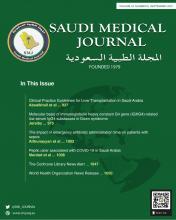Survival rates for adolescents and young adults diagnosed with cancer have varied considerably depending on cancer type. A new study indicates that survival for multiple cancer types in such patients has improved in recent years, but some patients diagnosed with common cancer types still show limited survival improvements. The results are published by Wiley early online in CANCER, a peer-reviewed journal of the American Cancer Society.
For the study, investigators at the National Cancer Institute analyzed survival trends related to cancers with the highest mortality rates in adolescents and young adults. Relying on information from the Surveillance, Epidemiology, and End Results (SEER) cancer registry and the National Center for Health Statistics, the team focused on incidence, mortality, and survival rates for nine cancer types from 1975–2016. By examining survival rates over time among adolescents and young adults with the most lethal forms of cancer, they were able to identify those cancers with the greatest need for future research.
The investigators uncovered significant improvements in 5-year survival for young patients with brain and other nervous system tumors, colon and rectum cancer, lung and bronchus cancer, acute myelogenous leukemia, and Non-Hodgkin lymphoma. Limited or no improvement in survival was found for those with female breast cancer, cervical cancer, ovarian cancer, and bone/joint sarcomas.
For female breast cancer: 5-year relative survival increased from 1985 through 2007, while mortality declined from 1986 to 2012 and increased since 2012.
For cervical cancer: 5-year relative survival remained steady from 1975 through 2011. There was a declining incidence rate and a flat mortality rate after 2005.
For ovarian cancer: 5-year relative survival rose slightly for the whole period. Incidence and mortality rates dropped between 1993 and 1996.
For bone/joint sarcomas: 5-year relative survival increased from 1975 to 1989 before leveling off.
“As the SEER cancer data collection expands over time, including more years of diagnosis, we are able to piece together a larger part of the cancer survival story for the adolescent and young adult population in the United States,” said lead author Denise Riedel Lewis, PhD, MPH. “These results will help refocus our research efforts on adolescent and young adult cancer survivorship.”
Full Citation: “Survival outcomes for cancer types with the highest death rates for adolescent and young adults.” Denise Riedel Lewis, Elizabeth J. Siembida, Nita L. Seibel, Ashley Wilder Smith, Angela B. Mariotto. CANCER; Published Online: July 26, 2021 (DOI: 10.1002/cncr.33793).
URL Upon Publication: http://doi.wiley.com/10.1002/cncr.33793
Copyright © 2021 The Cochrane Collaboration. Published by John Wiley & Sons, Ltd., reproduced with permission.
- Copyright: © Saudi Medical Journal
This is an Open Access journal and articles published are distributed under the terms of the Creative Commons Attribution-NonCommercial License (CC BY-NC). Readers may copy, distribute, and display the work for non-commercial purposes with the proper citation of the original work.






